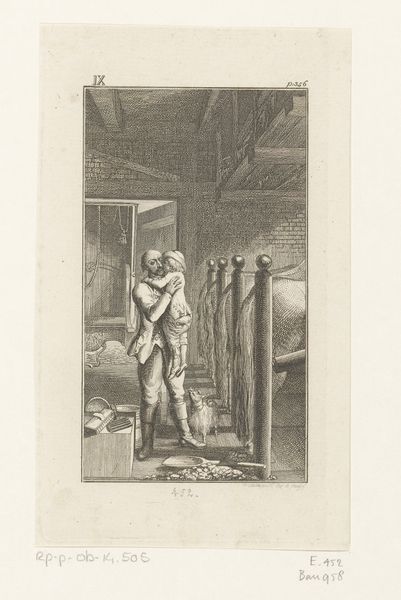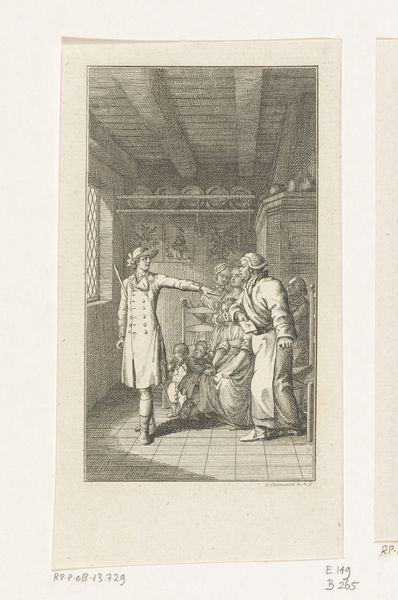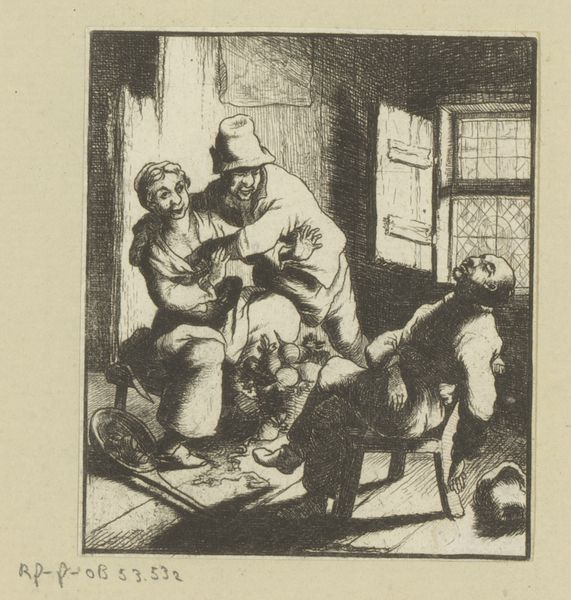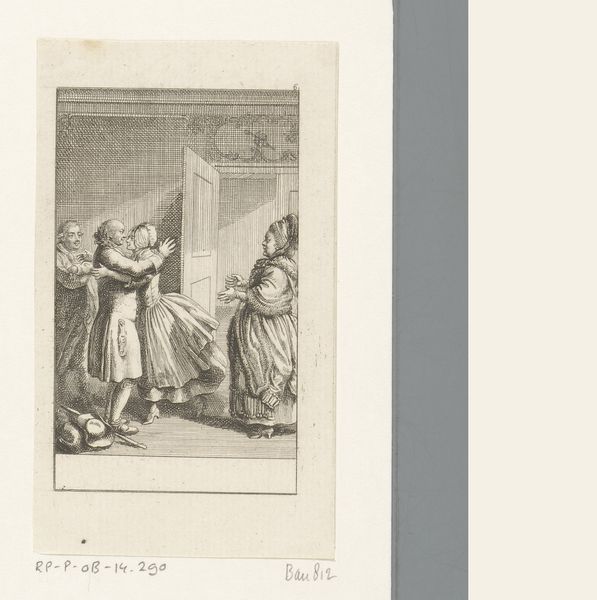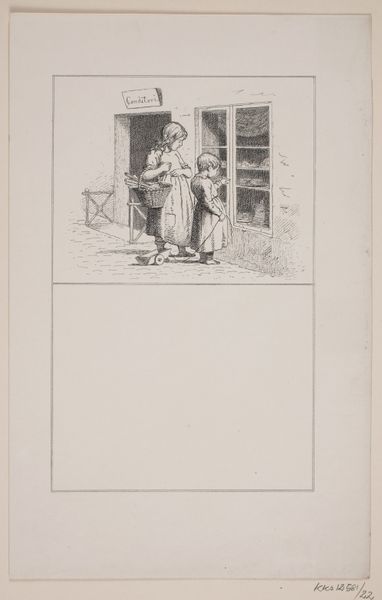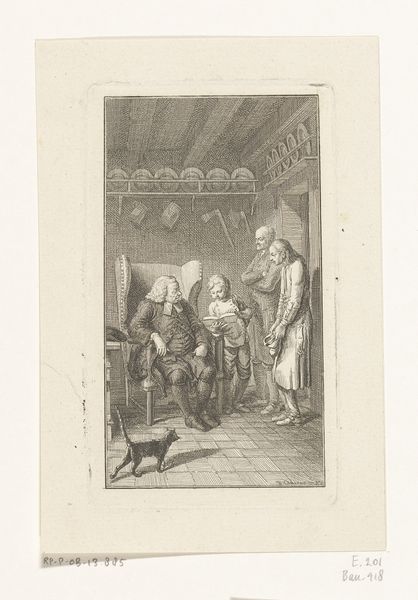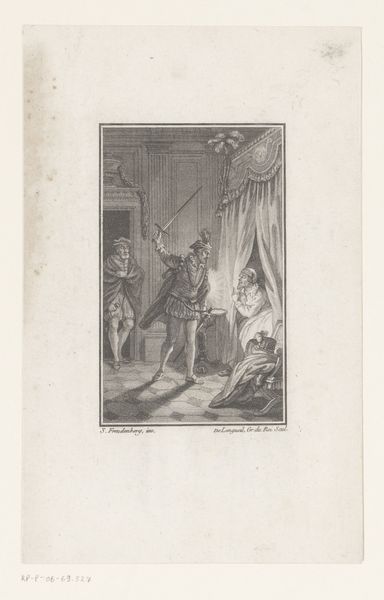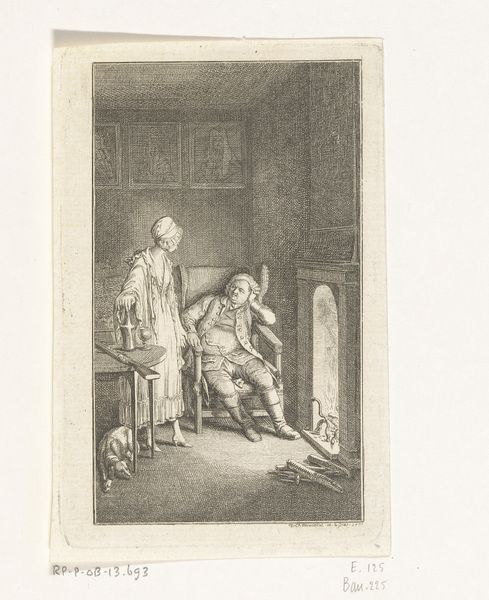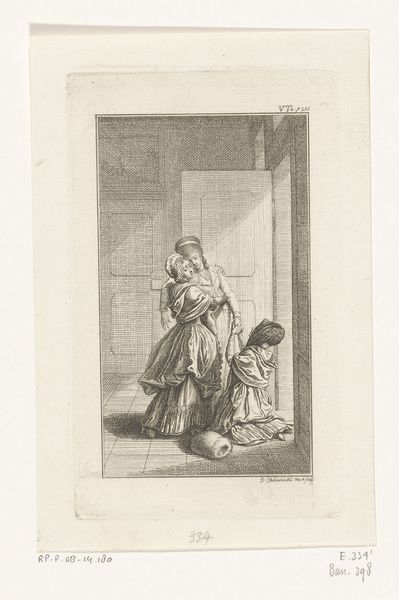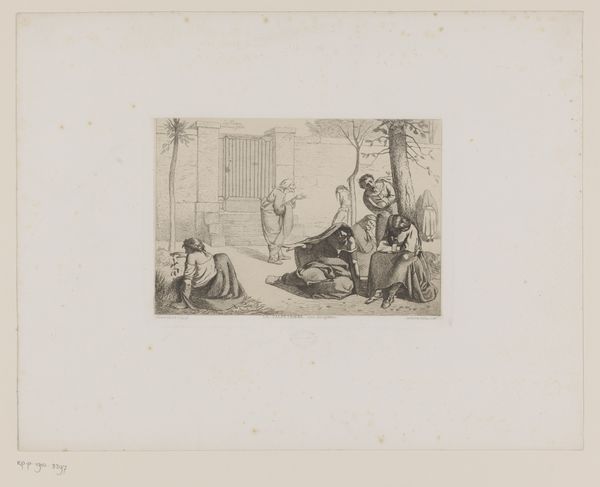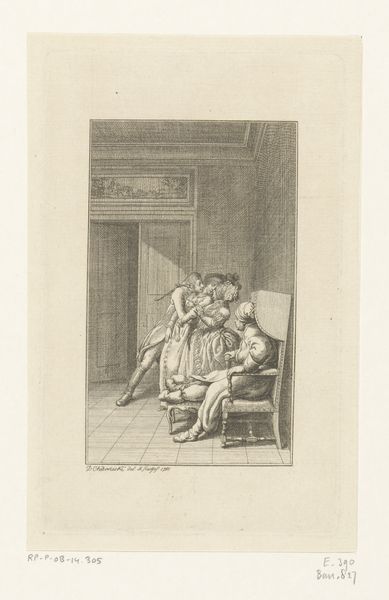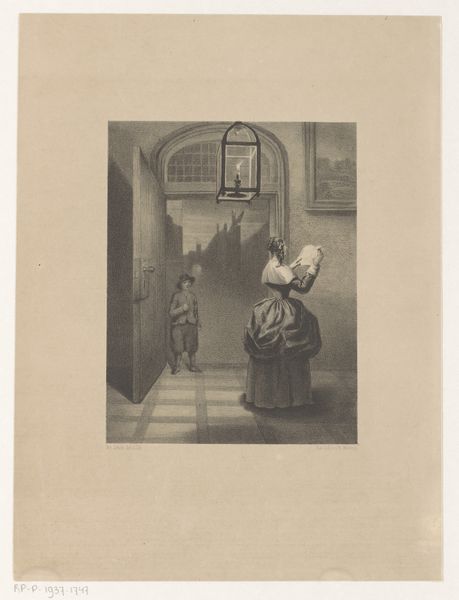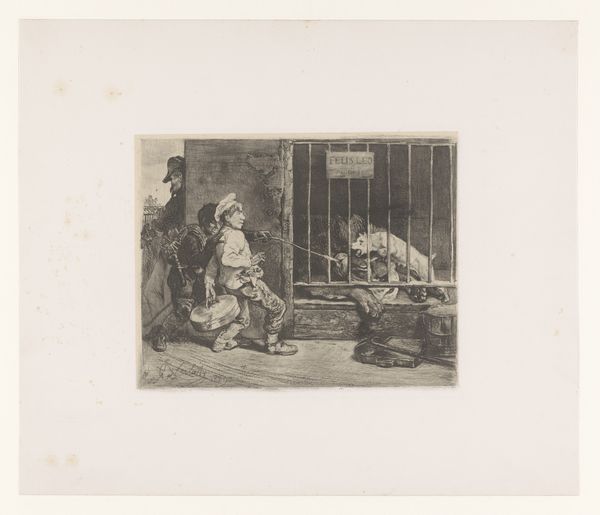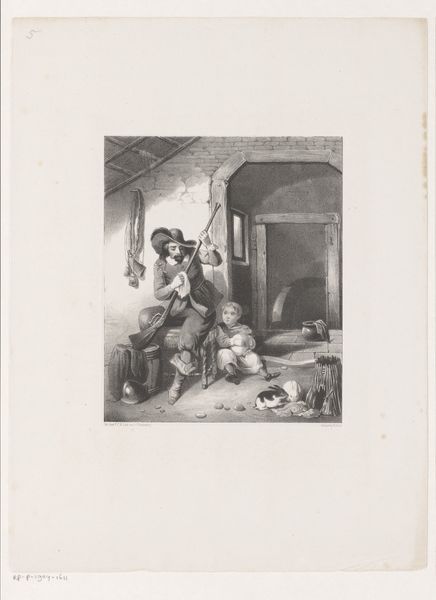
Dimensions: height 116 mm, width 68 mm
Copyright: Rijks Museum: Open Domain
Curator: This is Daniel Nikolaus Chodowiecki's engraving, "Wilhelm Blumenthal en de kozak," created around 1780, now residing here at the Rijksmuseum. The subject depicts an interior scene with two figures. Editor: It immediately strikes me as unsettling, a tense encounter. The close quarters and the gaze between the two figures—it's heavy with unspoken meaning. What do you see in it? Curator: As an engraving, its impact is deeply tied to the meticulous process. The artist's choice of the engraving technique meant painstakingly carving into a metal plate, demonstrating impressive control over the materials, tools and reproducible processes. The level of detail is remarkable, creating this intimate interior using linear patterns, where you notice, there's so much class-specific stuff piled up here under the stairs. Editor: That very interior, almost claustrophobic, draws me to the figures. The Kozak, identifiable by his distinct dress, seems an almost intrusive element, facing down someone that’s maybe a young member of the bourgeois—a symbol of foreign incursion. Do you think that's reading too much into it? Curator: The context of the piece supports such an interpretation. We know Chodowiecki worked during a time of considerable social upheaval and enlightenment ideals gaining traction. Considering how prints like these would have circulated amongst various social classes, we can speculate on how they communicated the experience of labor. This might indicate shifting societal structures and new ideas that might have affected traditional labor in specific regions in that moment. Editor: I see the historical impact of the Kozaks of that time; perhaps it's meant to provoke unease around themes of social standing during that period? There are details I keep circling back to. The way the Kozak grips the child, seemingly gentle, contrasts with the somewhat tense posture, almost as though protecting something precious from him...or protecting him from something unknown? Curator: That visual tension highlights the skill and labor behind its creation, and the way these elements reflect power structures makes the work fascinating in that sense. It encapsulates complex relations. Editor: A small piece with a lot to say, culturally and socially, across time. Curator: Indeed, a testament to the power of printmaking in shaping and reflecting social understanding.
Comments
No comments
Be the first to comment and join the conversation on the ultimate creative platform.
